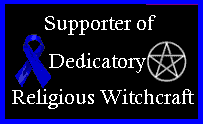Eclectic Runecraft; Tyr's Aett
The third, and final Aett is known as Tyr's Aett. The runes are as follows, and in this order; Tiwaz, Berkana, Ehwaz, Mannaz, Laguz, Inguz, Dagaz, and Othala.
Tyr is seen as the God of Justice, in the old Norse ways, and is one of the more popular Norse Gods. Here is an excerpt from Wikipedia on Tyr;
"According to the Poetic Edda and Prose Edda, at one stage the gods decided to shackle the Fenris wolf (Fenrir), but the beast broke every chain they put upon him. Eventually they had the dwarves make them a magical ribbon called Gleipnir. It appeared to be only a silken ribbon but was made of six wondrous ingredients: the sound of a cat's footfall, the beard of a woman, the roots of a mountain, bear's sinews (meaning nerves, sensibility), fish's breath and bird's spittle. The creation of Gleipnir is said to be the reason why none of the above exist. Fenrir sensed the gods' deceit and refused to be bound with it unless one of them put his hand in the wolf's mouth.
Tyr, known for his great honesty and courage, agreed, and the other gods bound the wolf. After Fenrir had been bound by the gods, he struggled to try and break the rope. When the gods saw that Fenrir was bound they all laughed, except Tyr, who had his right hand bitten off by the wolf. Fenrir will remain bound until the day of Ragnarök. As a result of this deed, Tyr is called the "Leavings of the Wolf".
According to the Prose version of Ragnarok, Tyr is destined to kill and be killed by Garm, the guard dog of Hel. However, in the two poetic versions of Ragnarok, he goes unmentioned; unless one believes that he is the "Mighty One".
In Lokasenna, Tyr is taunted with cuckoldry by Loki, maybe another hint that he had a consort or wife at one time."
Tyr is one of my more favored of the Norse Pantheon, as he exhibits many of the traits that I personally find admirable (strength, honestly, will, courage, etc...). As with the other two Aetts, the first letter of Tyr's name, Tiwaz, starts off the order.
Tiwaz is, to me, the Rune of the Warrior. It is shaped like a spear, which, in the hands of a capable warrior, is an exceptionally effective weapon. It's positive aspects are law, order, justice, bravery, honesty, and victory, while the negative ones are war, defeat, paying price for deeds, sacrifice, and dishonesty.
Common used for this rune were to engrave it onto sword blades, spearheads, and the like, or to tattoo it on the sword arm of a warrior. It was also a symbol for justice and law. One could carve it into a peice of wood, and carry it to a legal hearing, to grant luck and favor.
Phonetically, it is the 'T' sound of our English alphabet.
The second rune of this Aett is Berkana, the Rune of Growth. This rune is femininely oriented, and if you look at it, it can be seen to resemble breasts. It is a nurturing rune, and quite positive in it's energies. It's positive aspects include fertility, woman, love, birth, reproduction, growth, healing, recuperation, rejuvenation, children, and new beginnings. It's negative aspects include secrecy, containment, immaturity, lust, and abandonment.
This rune would be good to have carved into a bedpost of a couple desiring children, as well as on hospital beds or cribs. It would do well in barn stalls where livestock are expected to birth young.
Phonetically, it is the 'B' sound of our English alphabet.
The third rune in Tyr's Aett is Ehwaz, the Rune of Partnership. This rune denotes things that have to do with partnerships, relationships, and the like. The positive aspects of this rune are partnership, union, marriage, instinct, progress, trust, loyalty, and faith. The negative aspects are treachery, break up of partnerships, lack of direction, and reckless haste.
At a handfasting, this rune could be painted by both members of the union, as a blessing, or carved into a plaque over the headboard of the bed.
Phonetically, it is the 'Eh' sound of our English alphabet.
The fourth rune in this Aett is Mannaz, the Rune of Mankind. It is a very social rune, and applies to things of a social nature. It's positive aspects are mankind, development of consciousness, intelligence, reason, social structure, rational mind, support, awareness, and openmindedness. It has few negative aspects, focusing mainly on arrogance and bigotry.
This would be a good rune to carve into the door of a meeting hall or dance hall. It would also work well in the center of a table where meetings are held.
Phonetically, it is the 'M' sound of our English alphabet.
The fifth rune in this Aett is Laguz, the Rune of Intuition. This rune has a powerful water alignment, and deals with the flow of energy and thought. It's positive aspects include intuition, occult, flow, healing, mystery, empathy, emotion, unconscious mind, adaptability, and dreams. Negative aspects of this rune include emotional manipulation, madness, despair, suicide, lack of flexibility, and moods.
This rune is good as a talisman for the advancement of mental abilities and occultic learnig. It cana lso enhance one's intuition considerably.
Phonetically, it is the 'L' sound of our English alphabet.
The sixth rune in Tyr's Aett is Inguz, the Rune of Sexuality. It is rune that denotes and applies to physical attraction, fertility, and sex. The positive aspects of this rune include, but are not limited to sexuality, fertility, agriculture, peace, plenty, children, virtue, and common sense. The associated negative aspects focus mainly on lust and immaturity.
This rune could be carried in a pocket or carved into a headboard to improve one's sex life. It also works as a blessing for general prosperity when coupled with other runes to define it.
Phonetically, it is the 'Ng' or 'Ing' sound of our English alphabet.
The seventh rune of the third Aett is Dagaz, the Rune of Transformation. This is also known at the rune of Daybreak. This rune denotes massive transformation, either spiritually, emotionally, mentally, or socially. Positive aspects of this rune include daylight, illumination, break through, transformation, enlightenment, start of new cycle, health, prosperity, balance, and a state of being between things. Negative aspects include impulsiveness and ending.
This would be a decent rune to engrave over the doors of an academy or a place of learning. It would also work well at a place such as a rehab clinic.
Phonetically, it is the 'D' sound of our English alphabet.
The final rune of Tyr's Aett (and the Elder Futhark) is Othala, the Rune of Loyalty. This rune denotes loyalty to one's clan, country, organization, or cause. It was used during World War Two by the Nazi's on the Hitler Youth knives, and various other places for that purpose. Positive aspects of this rune include family, heritage, clan, home, nation, inheritance, patriotism, and natural law. Negative aspects include (and have somewhat been proven as) racism, greed, xenophobia, and provincialism.
This rune would make an excellent addition to any patriotic sigil, or any workings that had to do with military victory. It would also work well when used in connotation to family matters, bloodlines, and the like. Phonetically, it is the 'O' sound of our English alphabet.
This concludes our study into the third Aett.
Replies to This Discussion
© 2015 Created by Steve Paine.




